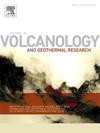Limited surface deformation, seismicity, and seismic velocity changes observed in Valles Caldera over decadal timescales
IF 2.4
3区 地球科学
Q2 GEOSCIENCES, MULTIDISCIPLINARY
Journal of Volcanology and Geothermal Research
Pub Date : 2025-01-30
DOI:10.1016/j.jvolgeores.2025.108283
引用次数: 0
Abstract
The Valles Caldera, located in Northern New Mexico, is one of the three young caldera systems within the United States to host past super-volcanic eruptions. Extensive geophysical work has indicated the presence of a shallow crustal magma body and a near-surface geothermal system; yet, no accompanying observations exist to constrain the transient nature of the system, which is a critical first step in assessing contemporary hazards both volcanic in nature and on nearby fault systems. Here, we present three independent data products to assess the current state of the Valles Caldera; a geodetic survey of thirteen benchmarks to measure time-averaged surface deformation across two decades, a decade-long record of intra-caldera microseismicity detected by template matching, and decadal-scale seismic velocity changes derived from ambient noise. The combined results suggest a quiescent system that does not have the characteristics commonly associated with active magmatic systems. We found limited surface deformation within the Valles Caldera over the 20-year survey period. The vertical and horizontal velocity fields suggest that a contracting intra-caldera deformation source could be present, however additional data is needed to confirm at a two-sigma confidence level. We detected 46 small magnitude earthquakes (< 1.15 Md) within the caldera with no evidence of seismic swarms since 2012. Seismic velocities were found to be stable over a 12-year period at depths consistent with the location of a previously inferred magma body. Each dataset in isolation has its limitations, most notably the geodetic survey, where we cannot rule out aliasing of the data due to transient changes occurring between survey periods, or unaccounted for biases due to equipment changes. However, compared to observations at other caldera and volcanic systems, the combined datasets suggest that the Valles Caldera is not currently in an active phase, where surface deformation consistent with a magmatic source, seismic swarms, and velocity changes often coincide with inferred magma, fluid or gas movement. Our results suggest that monitoring for a change-of-state should be continued and highlight the challenges of monitoring slowly deforming systems using campaign methods where different survey equipment was used.
在裂口谷观测到的有限地表变形、地震活动性和地震速度变化
Valles火山口位于新墨西哥州北部,是美国三个年轻的火山口系统之一,过去曾发生过超级火山爆发。大量的地球物理工作表明存在浅层地壳岩浆体和近地表地热系统;然而,没有伴随的观测来限制系统的瞬态性质,这是评估当代火山性质和附近断层系统危害的关键的第一步。在这里,我们提出了三个独立的数据产品来评估Valles火山口的现状;对13个基准的大地测量测量了20年来的时间平均地表变形,通过模板匹配检测到的火山口内微地震活动的十年记录,以及从环境噪声中得出的十年尺度的地震速度变化。综合结果表明,这是一个静态系统,不具有通常与活动岩浆系统相关的特征。在20年的调查期间,我们发现山谷火山口的地表变形有限。垂直和水平速度场表明,火山口内可能存在收缩变形源,但需要额外的数据在2西格玛置信水平上进行确认。我们探测到46次小震级地震(<;1.15 Md),自2012年以来没有地震群的证据。在与先前推断的岩浆体位置一致的深度,地震速度在12年期间是稳定的。每个单独的数据集都有其局限性,最明显的是大地测量,我们不能排除由于调查期间发生的短暂变化而导致的数据混叠,或者由于设备变化而导致的无法解释的偏差。然而,与其他火山口和火山系统的观测结果相比,综合数据集表明,Valles火山口目前并非处于活跃期,其表面变形与岩浆源一致,地震群,速度变化通常与推断的岩浆,流体或气体运动一致。我们的研究结果表明,应该继续监测状态的变化,并强调使用不同的调查设备使用活动方法监测缓慢变形系统的挑战。
本文章由计算机程序翻译,如有差异,请以英文原文为准。
求助全文
约1分钟内获得全文
求助全文
来源期刊
CiteScore
5.90
自引率
13.80%
发文量
183
审稿时长
19.7 weeks
期刊介绍:
An international research journal with focus on volcanic and geothermal processes and their impact on the environment and society.
Submission of papers covering the following aspects of volcanology and geothermal research are encouraged:
(1) Geological aspects of volcanic systems: volcano stratigraphy, structure and tectonic influence; eruptive history; evolution of volcanic landforms; eruption style and progress; dispersal patterns of lava and ash; analysis of real-time eruption observations.
(2) Geochemical and petrological aspects of volcanic rocks: magma genesis and evolution; crystallization; volatile compositions, solubility, and degassing; volcanic petrography and textural analysis.
(3) Hydrology, geochemistry and measurement of volcanic and hydrothermal fluids: volcanic gas emissions; fumaroles and springs; crater lakes; hydrothermal mineralization.
(4) Geophysical aspects of volcanic systems: physical properties of volcanic rocks and magmas; heat flow studies; volcano seismology, geodesy and remote sensing.
(5) Computational modeling and experimental simulation of magmatic and hydrothermal processes: eruption dynamics; magma transport and storage; plume dynamics and ash dispersal; lava flow dynamics; hydrothermal fluid flow; thermodynamics of aqueous fluids and melts.
(6) Volcano hazard and risk research: hazard zonation methodology, development of forecasting tools; assessment techniques for vulnerability and impact.

 求助内容:
求助内容: 应助结果提醒方式:
应助结果提醒方式:


